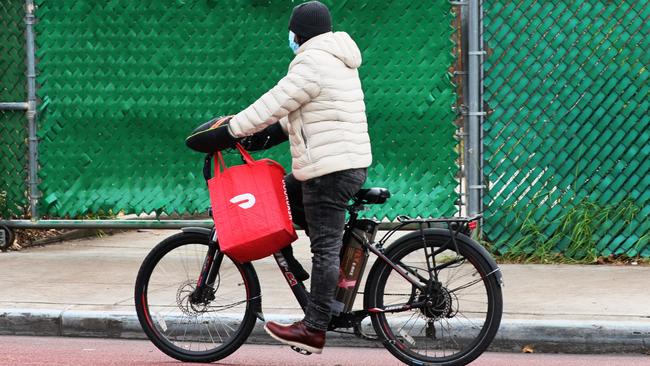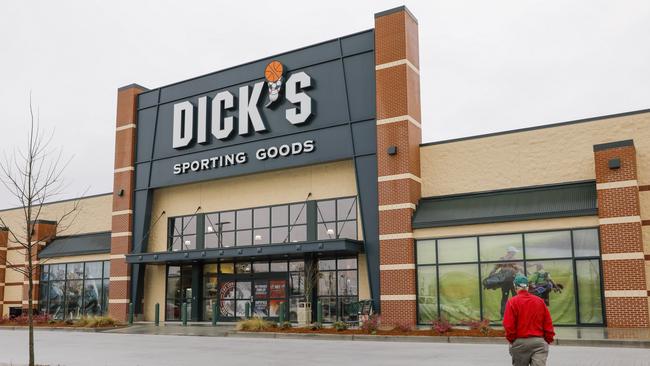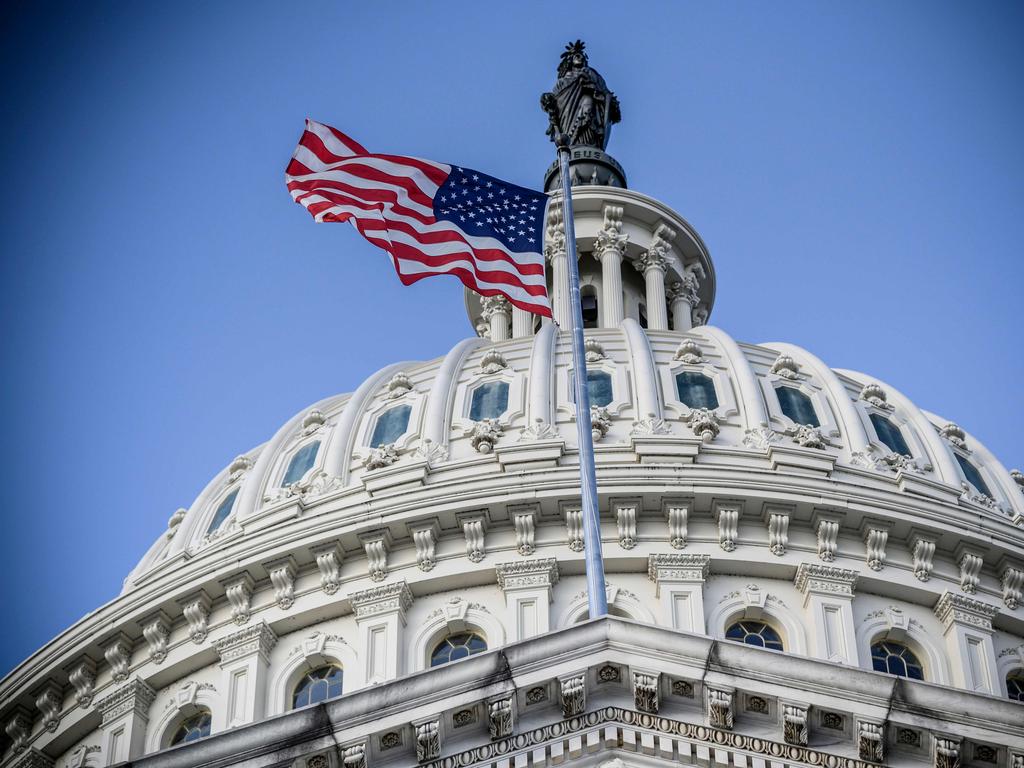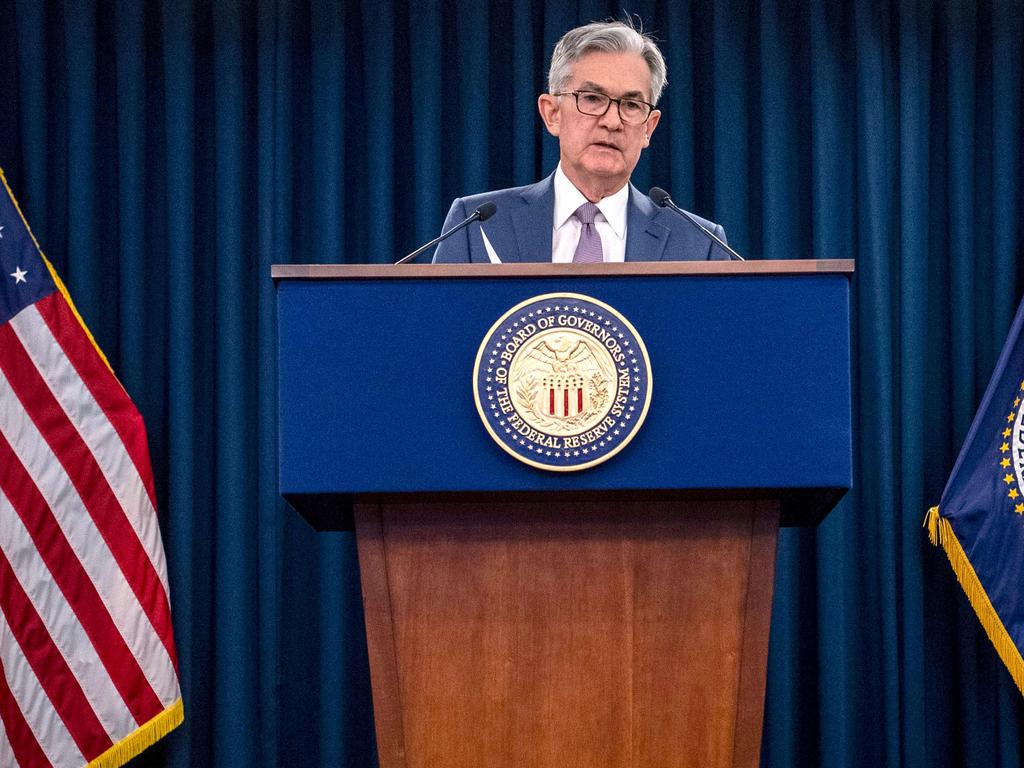These businesses thrived in lockdown. Can they keep it up now?
As the economy starts to return to normal, companies that prospered during lockdowns brace for a shift in spending.

Companies whose businesses boomed during the COVID-19 pandemic face new hurdles to sustaining fast growth as the US economy starts returning to normal activity.
Businesses from DoorDash and Etsy to Lowe’s and Kellogg Co. said they are bracing for the prospect that spending will shift again as people indulge pent-up demand for eating out, travelling, attending concerts and other activities that have been heavily limited.
The reckoning might come in months. President Biden said last week that the US would have enough COVID-19 vaccines for all adults by the end of May, and states including Texas have rolled back limits on many businesses and commercial activities. On Monday, the Centers for Disease Control and Prevention said fully vaccinated people can gather privately without masks or social distancing.
Delivery company DoorDash thrived during the downturn as restaurants closed or sharply curtailed indoor dining. In the fourth quarter, it handled 273 million orders, more than triple the amount a year earlier. Its overall performance drove a better-than-expected stockmarket debut in December.
But as diners return to eating in restaurants, they are likely to order less at home, and DoorDash, which remains unprofitable, expects growth to slow. Finance chief Prabir Adarkar said on a recent earnings call that while business held up somewhat in markets that have reopened, “vaccination and full re-openings could drive sharper changes in consumer behaviour than current data would predict.”
Analysts project DoorDash’s revenue will increase 29 per cent this year, according to data from FactSet — healthy by most measures but about one-eighth its rapid pace in 2020. Its stock is off more than 30 per cent from its highest closing on record.
Sales at home-improvement retailer Lowe’s rose 24 per cent last year, the fastest pace in two decades, as homeowners remodelled bathrooms, built decks and completed other improvements to the houses they spent so much time in. For this year, Lowe’s has laid out three projections for the coming year. All anticipate a decline in revenue, ranging from 2 per cent to 7 per cent. Chief Executive Officer Marvin Ellison has said the company will emphasise gaining market share and improving profit margins. “2021, to state the obvious, is a very difficult environment to forecast,” he said late last month.
Dick’s Sporting Goods on Tuesday said it expects sales this year to be between 2 per cent higher and 2 per cent lower, after rising nearly 10 per cent in the fiscal year that ended in January, as people spent more on fitness and outdoors gear. The company said it is experimenting with a new prototype location that will include features such as an outdoor field and wellness spaces.

Tech companies in particular prospered over the past year as people and companies diverted spending to online tools and pursuits. Gene Munster, managing partner at investment and research firm Loup Ventures, said that the biggest players will remain in strong shape, but that for some smaller businesses that had breakout years, “there’s going to be some readjusting for these companies when things go back to normal.”
Online marketplace Etsy doubled its revenue in 2020, as shoppers purchased everything from face masks to home decor. But executives have said those purchases could wane.
“We also know, we hope, that as the world opens up later this year, consumers will soon be able to spend more of their money on travel, dining and entertainment, and this will create some headwinds to Etsy’s growth relative to 2020,” financial chief Rachel Glasser said on a recent earnings call. The company still thinks that it can outgrow the broader e-commerce sector.
The tech-heavy Nasdaq Composite Index on Monday fell Monday into correction territory, meaning a fall of more than 10 per cent, after it peaked in mid-February following a rise of 45 per cent in the preceding 12 months. The index rebounded sharply Tuesday, however.
Many companies that thrived in the remote-work era might benefit if overall consumer demand strengthens as the pandemic wanes. Jonathan Golub, chief US equity strategist at Credit Suisse, projects that earnings for growth companies will increase 17 per cent this year, after rising 13 per cent in 2020. “They’re going to look even better as a group because they are sitting on a much stronger economy,” he said.
At the same time, some companies whose business remains strong might face slower growth. Amazon.com projects revenue increasing 33 per cent to 40 per cent in the first quarter, in line with the 38 per cent jump in its sales in 2020, but analysts expect that to moderate to 16.8 per cent in the fourth quarter, which would be its slowest pace since early 2015, according to FactSet.
Corsair Gaming., which makes headsets and other accessories for videogamers, anticipates that with more people picking up gaming over the past year, it has an opportunity to sell more gaming accessories. More people going to school and work, however, could mean less time at home playing. “That’s why we think the growth will be moderate in the second half,” Corsair CEO Andrew Paul said recently.
Best Buy Co. warned last month that its sharp growth, helped by homebound shoppers splurging on televisions, laptops and other electronics, would slow. Many of those sales were made online, and the company has laid off some store workers as it expects that shift to continue.
Other companies are looking for ways to adapt. Zoom Video Communications Inc., whose revenue quadrupled last year as it became a household name, is projecting revenue will rise more than 40 per cent this year and is adapting its tools for businesses that will have some workers in the office and others at home. CEO Eric Yuan said this month that Zoom also plans to expand its services beyond videoconference to sustain growth, such as with webinars.
Food makers including Kellogg are bracing for a shift after sales during the pandemic rose as people were at home more often.
Kellogg CEO Steve Cahillane said that he believes more people will continue to eat at home than before the pandemic, but that a key challenge is making sure they don’t get bored of it, which the company plans to address with new flavours of cereals and snacks.
“How do we make this in-home dining experience more exciting than a Michelin-starred restaurant so that people are not using our food because they have to but because they want to?” he said in a recent interview.
The Wall Street Journal






To join the conversation, please log in. Don't have an account? Register
Join the conversation, you are commenting as Logout